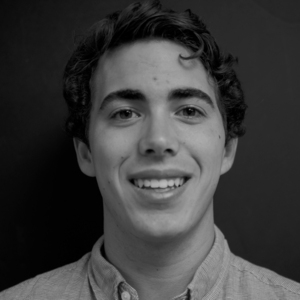Dunn: New York’s free tuition program helps to equalize the college playing field, but it needs a facelift
Jacob Greenfeld | Asst. Photo Editor
New York state Gov. Andrew Cuomo must rework the Excelsior Scholarship to better accommodate low-income families, says Liberal columnist Ryan Dunn.
Editor’s note: This Liberal column is one take on New York state’s new free college tuition program. Read the Conservative column about the program here.
New York state’s expansive Excelsior Scholarship has turned Gov. Andrew Cuomo into a champion of working-class families that struggle to afford the costs of college tuition. But while the scholarship has good intentions and is progress in the equalization of higher education, it must be reworked if it aims to actually help low-income families that need the most help paying for college.
The issue of college tuition found its place on the national agenda with the rise of liberal folk hero Sen. Bernie Sanders (D-Vt.). Free college tuition proponents advocate for a more educated society, and detractors argue against the hefty costs that come with such a program. But neither side could ignore that American student loan debt has reached $1.41 trillion, an astronomical figure that outpaces American credit card debt by nearly $600 billion, according to Student Loan Hero.
The Excelsior Scholarship confronts that problem head on by aiming to lessen the burden of student loan debt through the offering of free tuition for New York state residents who attend State University of New York and City University of New York schools. This fall, the scholarship will be offered to students from families that make less than $100,000 a year — a figure that will increase to $125,000 by 2019, according to the SUNY website.
Traci Kirtley, chief program officer with College Possible, an organization that works with low-income students to provide support in pursuit of their college degree, said the scholarship could be a boon for middle-class families.
“I think in this case the Excelsior Scholarship will probably be very welcome by middle-class and upper-middle-class families who might not have access to other forms of financial aid at those state institutions,” Kirtley said.
The Excelsior Scholarship has the potential to be an all-encompassing, paradigm-shifting piece of legislation that can level the collegiate playing field between people of different socioeconomic statuses. But its rigid nature in not supporting other college expenses limits its capacity to aid prospective college students.

Daily Orange File Photo
The program has helped to reignite the conversation about free college after Sanders’ campaign concluded and is revolutionary in terms of efforts in the U.S. to equalize higher education. To make it work, Cuomo must expand its subsidies to cover gaps that exist in low-income families’ tuition plans. This expansion could offer scholarships for qualified students that can be used for housing, textbooks, meal plans and other expenses.
It’s important to remember that right now the scholarship only covers tuition. At a private institution like Syracuse University, this offer could be life-changing. At more than $45,000 a year, SU has one of the highest tuition rates in the country, according to the university’s financial aid website.
But tuition at SUNY schools is much cheaper, as the universities are subsidized by the state. The State University of New York at Oswego, for example, charges in-state residents $6,470 annually in tuition, but the total cost of attending the school amounts to more than $23,000, per the university’s website.
Students from low-income households who struggle the most to afford college will be unaffected by this scholarship, as they already pay low tuition fees due to programs like the Pell Grant and the Tuition Assistance Program (TAP).
Additionally, the scholarship’s requirement that students take at least 12 credits could be detrimental to students from low-income families who work during the school year to support themselves.
“I think that’s good to the extent that it incentivizes the student to enroll full time and they’re able to enroll full time to get their degrees more quickly,” Kirtley said. “But for some low-income students — because they have to work and provide for their family — they may not have time to take that many classes.”
This all equates to one thing: a bill that just doesn’t help the families it’s supposed to. The Excelsior Scholarship is a great program if its objective is to save middle-class families $6,000 a year. But $6,000 would be more beneficial for a family that makes $20,000 instead of one that makes $100,000.
Although the program has the potential to lessen student loan debt for middle-class families, it must expand its focus to increase college accessibility to lower-income students.
Ryan Dunn is a freshman history major. His column appears weekly. He can be reached at rarozenb@syr.edu.
Published on April 25, 2017 at 12:17 am






